The Bible is the most popular book ever written. As of 2023, the full Bible has been published in 736 languages worldwide, with the New Testament in 1658 languages. It holds a Guinness World Record as the best-selling non-fiction book of all time.
But what, you may ask, is the best Bible translation for kids? With an ever-growing collection of children’s Bibles and bible story books in the world, and with so many different Bible versions and books of Bible stories, how do you choose the best edition of God’s Word for the children in your life?
Whether you’re a Sunday School teacher who’d like to purchase a Bible for the kids in your class, or you are a parent/grandparent and you want your child to have their own Bible, this is the article for you!
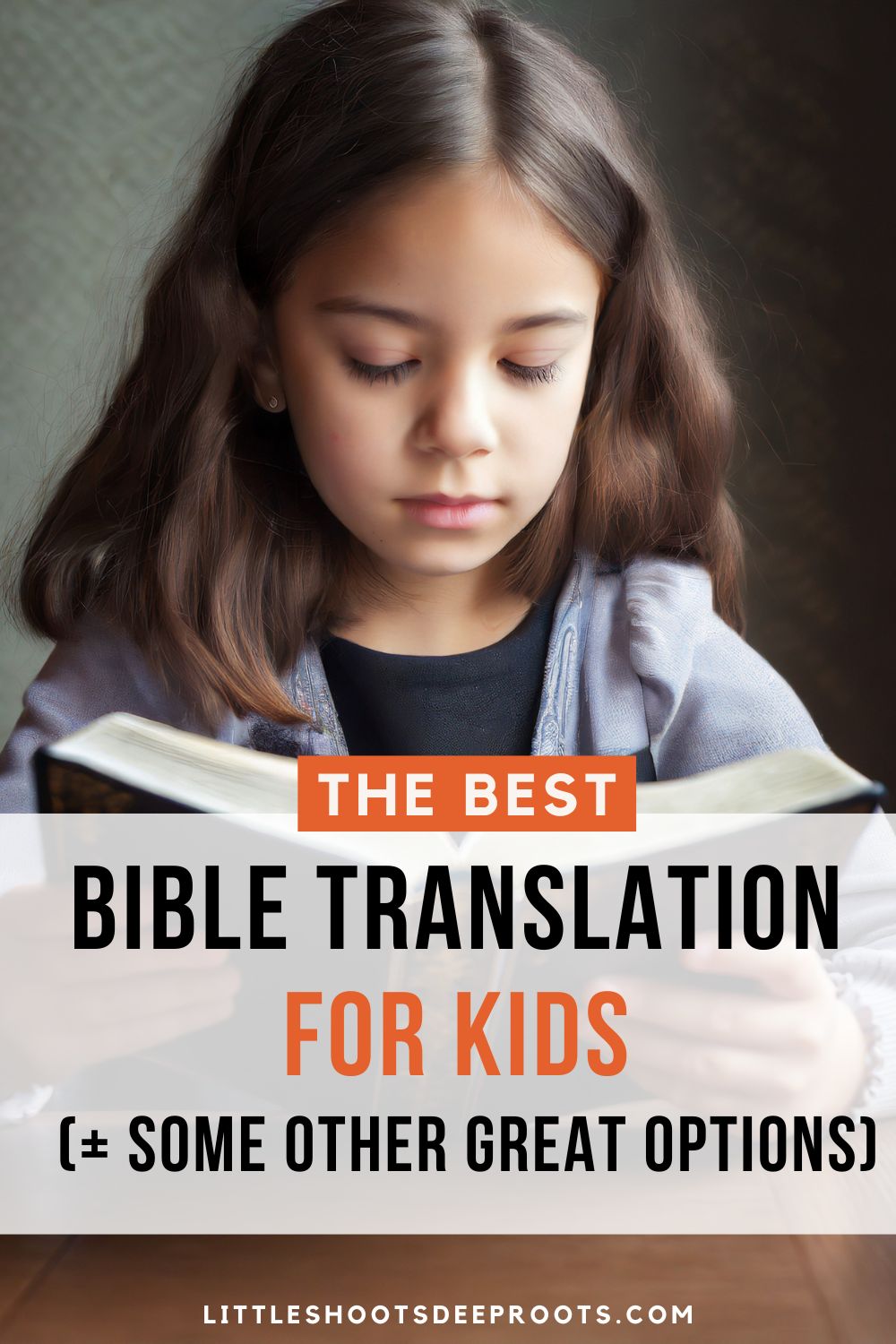
But first…
Why listen to my choice for the best Bible translation for kids?
Why should you listen to my opinion?
- I spent 10+ years as the Children’s Ministries Director at my church, ministering to 100+ kids each week. I have watched kids grow from babies into adults since I began work in Children’s Ministries.
- I am a parent, with 3 children of my own, currently ages 9-14. My kids have way more children’s Bibles than they need, partly because I have poked around to try to find the best! We have children’s Bibles in ESV, NRSV, NIV, NIrV, and NLT.
- I’m the award-winning author of 5 books (picture books and devotional books) for Christian kids and families.
- I run an international ministry for Christian parents.
- I have read hundreds of Christian resources for children and know what works for kids and what doesn’t.
In my joint ventures in Children’s Ministry, parenting, and writing for kids, I’ve uncovered some very clear opinions on which is the best Bible translation for kids. But just to be clear, it’s still an opinion. You can disagree and we can still be friends. 🙂
So you don’t have to skim the whole article looking for the answer, I’m going to tell you right now: I believe the NLT (New Living Translation) to be the best Bible translation for kids. Keep reading to find out why!
Why Bible translations are different:
In order to make an educated decision about the best Bible version, we need to understand a bit about the translation process from the original languages (Hebrew texts for the Old Testament and Greek texts for the New Testament ) into the English language.
There are 2 basic types of translation: Thought-for-thought translation and word-for-word translation.
Thought-for-thought translation takes the main ideas presented in each section of the original text, and aims to translate the original meaning as true-to-text as possible. The goal is to have a text that is accurate in intention while also being readable.
In a word-for-word translation, the goal is to translate each original word into an English word. The goal is to have a text that is as accurate to the individual words as possible.
As you might imagine, there are pros and cons to both. A readable text is critical in today’s world of short attention spans, but it’s also important to be accurate. When you’re looking for a Bible for kids, you want a good modern translation, but opinions will vary on which are the most accurate translations.
In my opinion, the thought-for-thought translations are the best for children, as the word-for-word translations tend to include a lot of awkward phrasing and old-fashioned language. (Good for studying, not for an initial introduction to God’s word!)
It’s important to note that all the following translations are highly respected as portraying the original meaning accurately. They simply follow different approaches. All the translations I compare below were made by teams of highly skilled linguists and theologians.
Here’s a list and infographic showing how most modern English translations are classified. On the far end of thought-for-though translations, we have Bibles that are actually classified as paraphrases. For example, the Message is not considered a translation, as it’s the word of a single pastor and emphasizes modern readability. It’s considered a paraphrase. It’s a great Bible to read alongside a more literal translation.
Different translations in the English language:
(Note: each translation name is linked to a page that gives more details about the history and goals of the translation.)
- New Living Translation: The NLT is the most thought-for-thought translation on this list, which makes it highly readable. It’s not a paraphrase, however, but a true translation. It’s a reliable and readable translation, and is the one I personally use when I want to listen to large amounts of the Bible at a time.
See NLT Children’s Bibles on Amazon
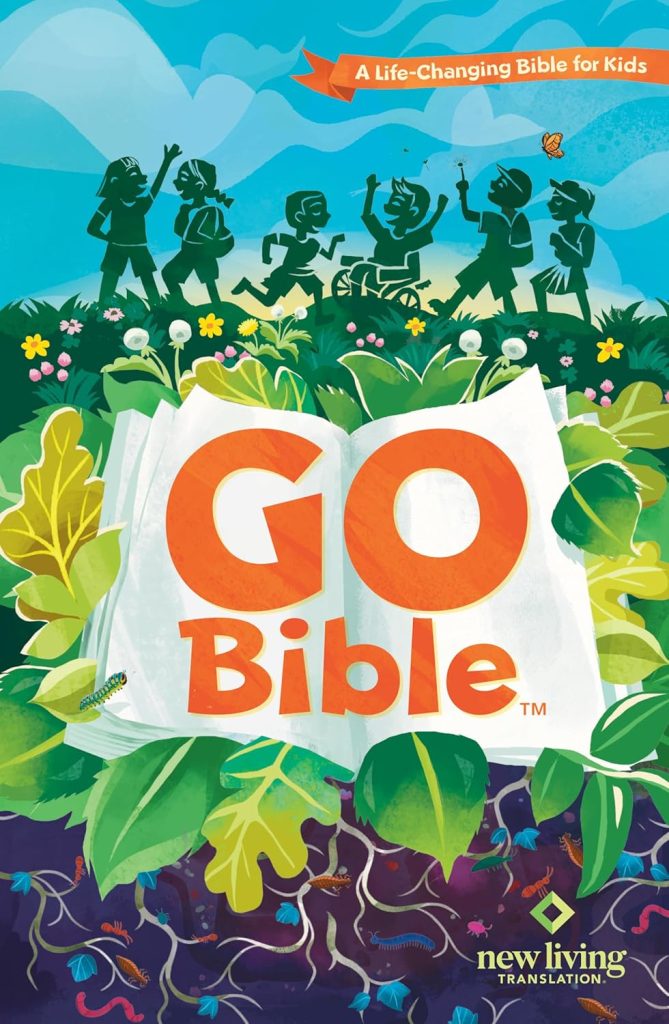
2. International Children’s Bible: The ICB is an excellent children’s translation, as it was created to be both a trustworthy translation while also using simple language. They have intentionally chosen to aid a reader’s understanding by re-phrasing ancient measurements, customs, and figures of speech for the modern reader. An ICB Children’s Bible is a great choice.
A Bible translation that is similar in tone and sentence structure would be the New Century version.
See ICB Children’s Bibles on Amazon
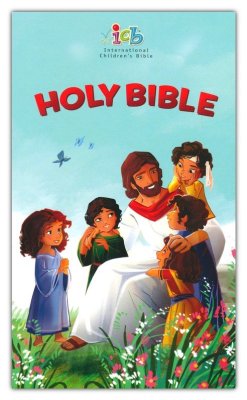
3. New International Version: The NIV was intended to “accurately and faithfully render God’s unchanging Word in modern English”. I appreciate that in the past decade, they made the effort to go back and ensure that any gender-neutral language in the original languages is reflected as gender-neutral in the modern translation. (They did not, as per internet gossip, turn gender-specific pronouns into gender-neutral ones. The new version is faithful to the original languages!) They make periodic updates when new discoveries are made about biblical languages and the biblical world. This is an excellent translation for older kids (age 12+), as they have many excellent study Bibles as well.
See NIV Children’s Bibles on Amazon
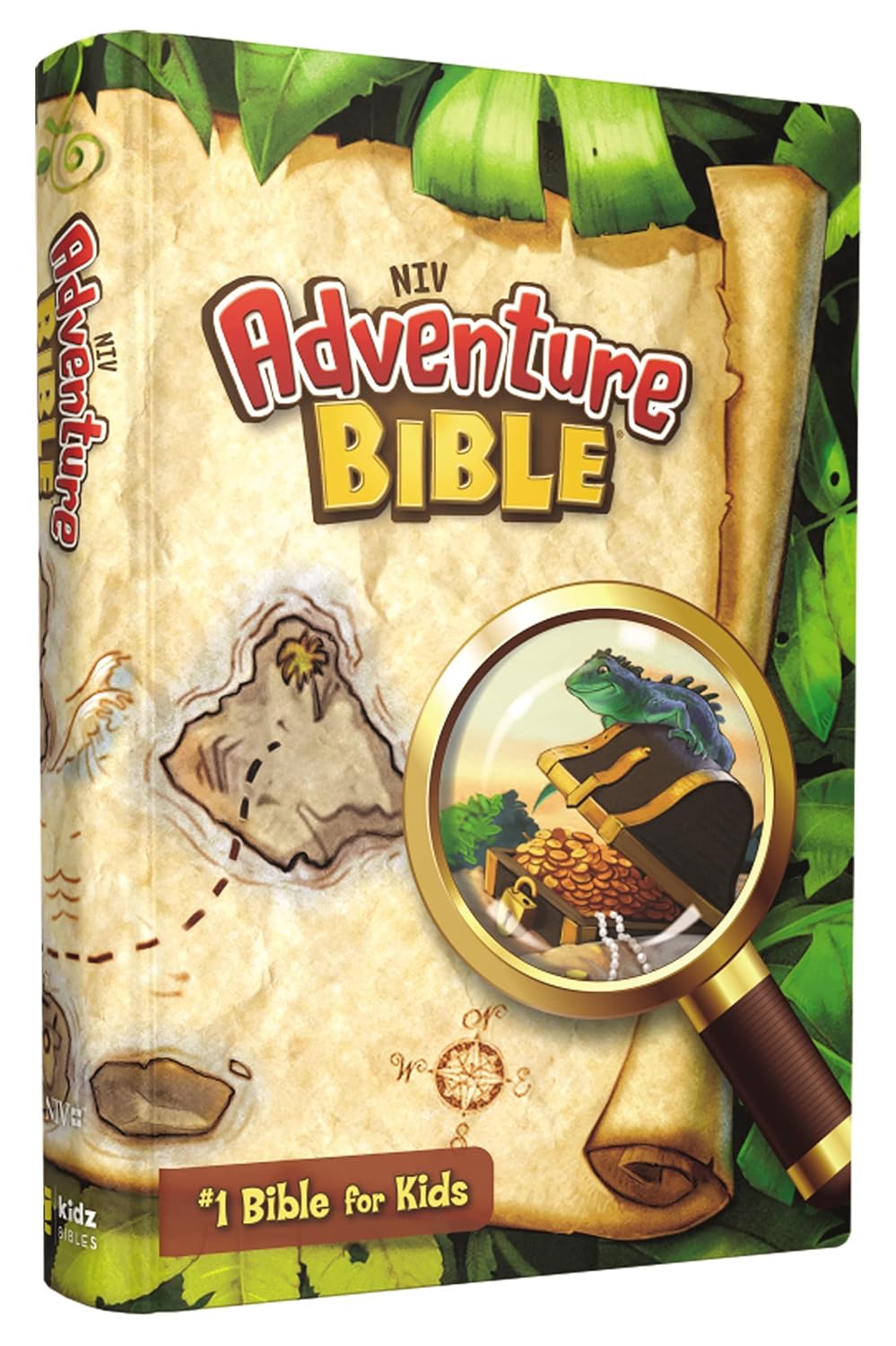
If you like the NIV translation but you have young readers, I recommend the NIrV (New International Reader’s Version). It’s created by the same group of scholars, with the same goals as the NIV, but has simpler sentence structure. They’ve also worked to simplify some concepts and use shorter words in a similar way to the ICB. This one does sometimes get categorized more as a paraphrase than a thought-for-thought translation, however.
See NIrV Children’s Bibles on Amazon
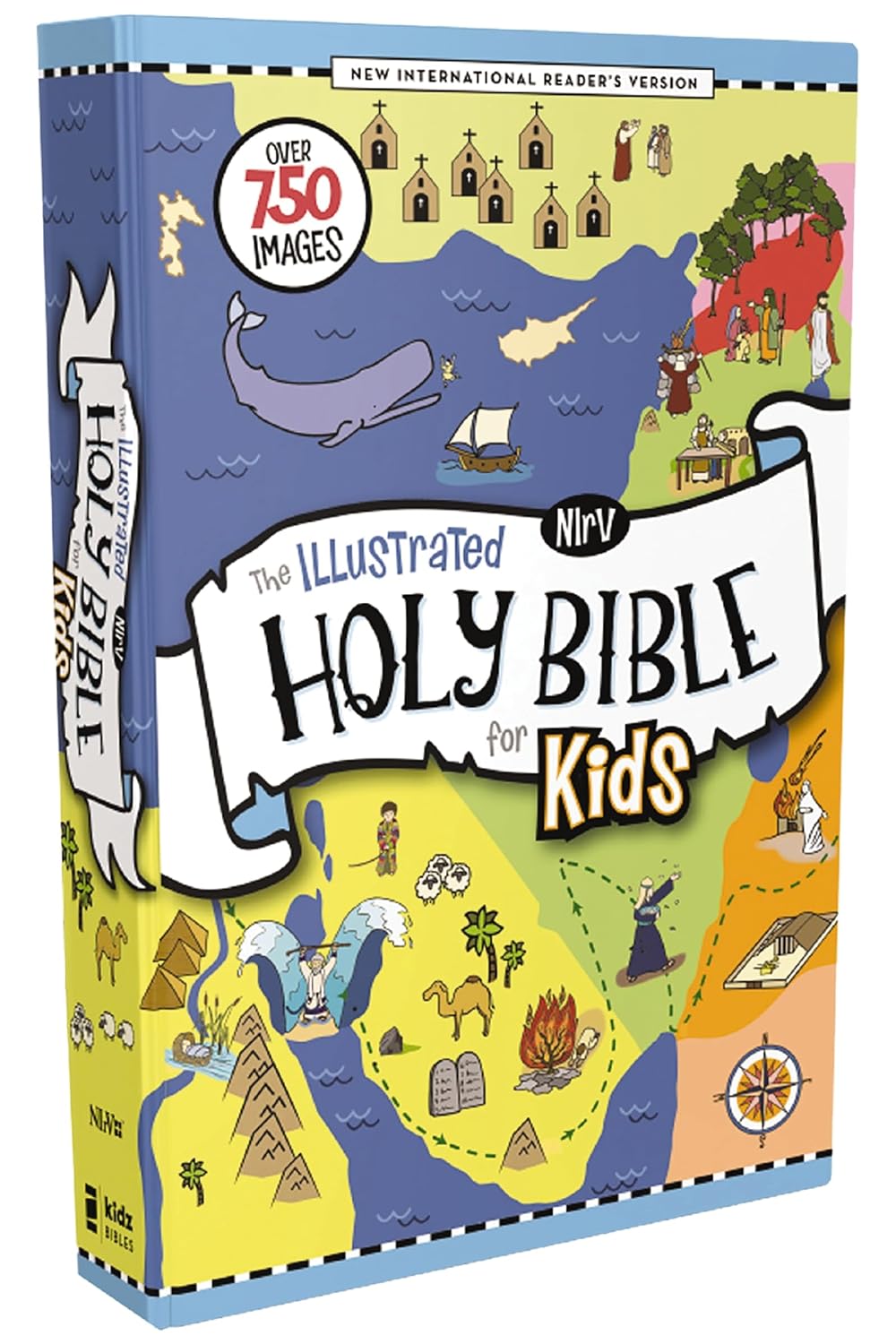
4. New King James Version: Most people are familiar with the King James Bible, and also know that it contains a lot of words and phrases that aren’t commonly used in English anymore. Many people love it dearly, so if this is you, you’ll want to consider the more readable NKJV for your kids.
See NKJV Children’s Bibles on Amazon
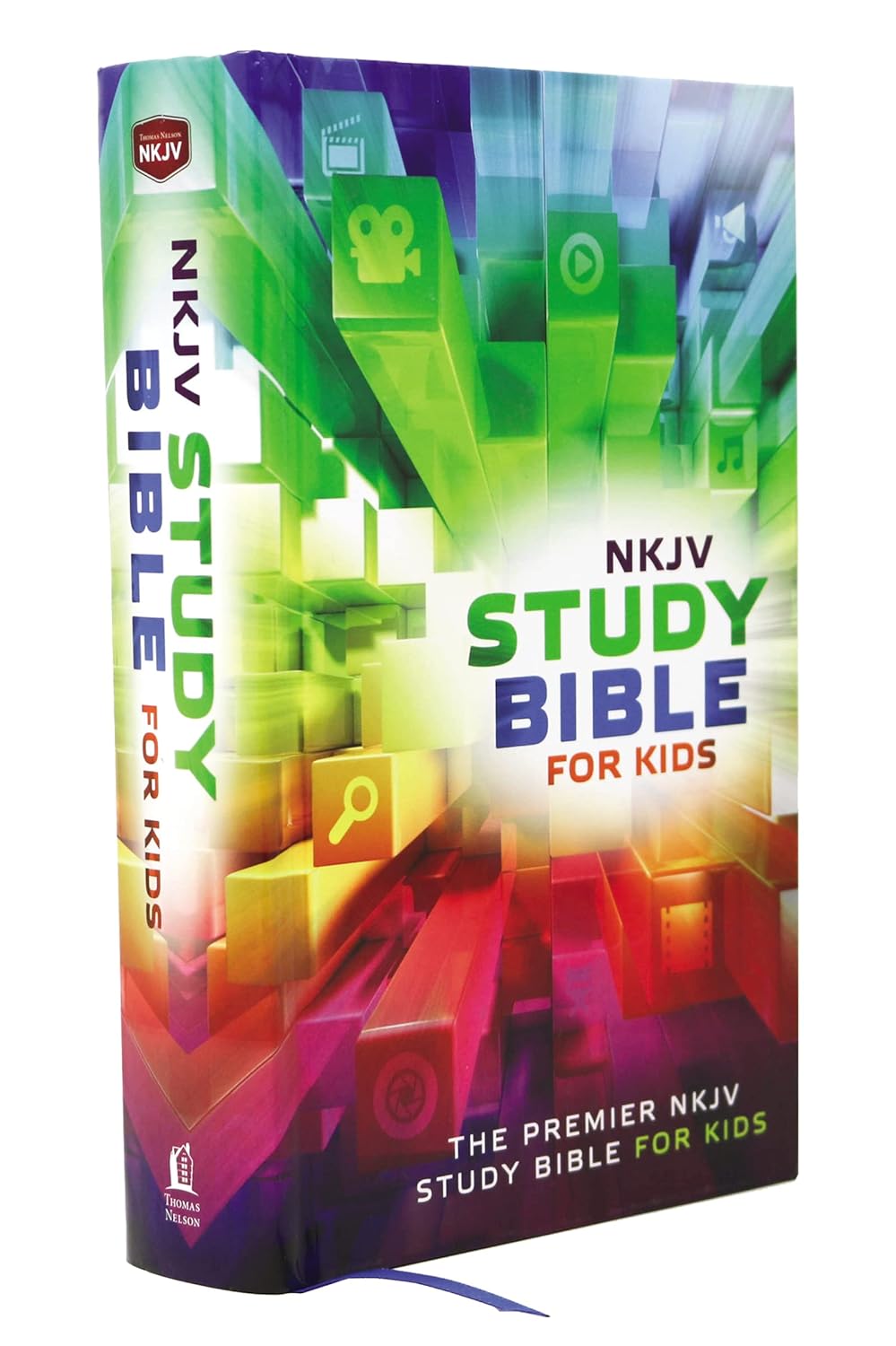
OTHERS:
English Standard Version: The ESV is similar to the NIV in a lot of ways, but with a more word-for-word emphasis. I find it more complex than the NIV and therefore don’t recommend it for kids.
See ESV Children’s Bibles on Amazon

The Christian Standard Bible, New American Standard Bible, and New Revised Standard Version translations are all on the word-for-word end of Bible translation. Again, these are great for deeper study for adults, teens, and possibly older children, but not for a younger child’s first introduction to reading the Bible. As such, you won’t find many Bibles in these translations targeted at children.
My top pick for the easiest translation for kids to read: NLT (all-around readable and understandable translation)
Runner Up: The NIrV is best for early readers, as in, young kids who are reading the Bible on their own. Older readers will probably find the lack of compound sentences a bit tedious but the reading level and vocabulary is perfect for young readers.
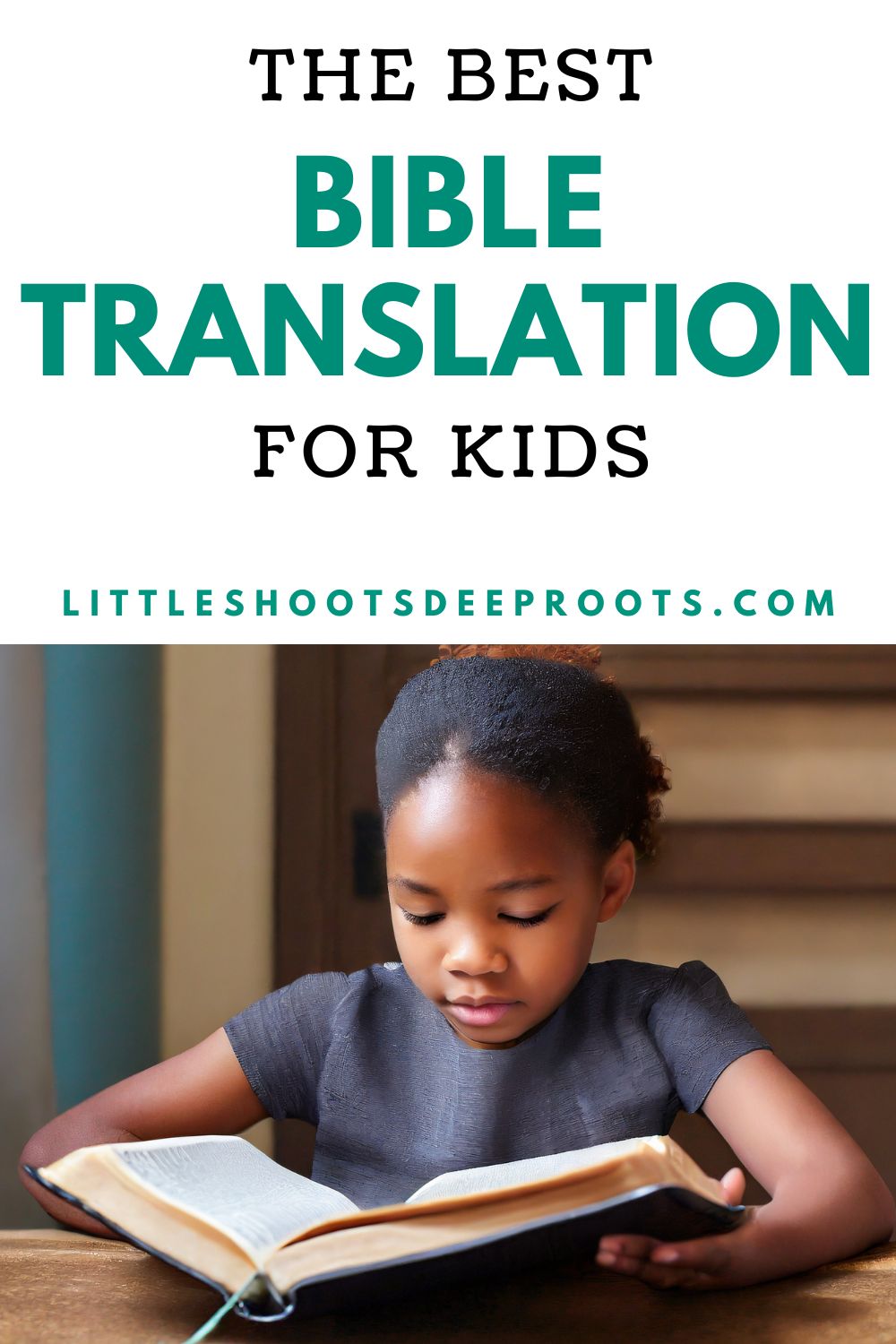
Do you want extra material?
Another thing to consider when choosing a children’s Bible is whether or not you want extra material in your children’s Bible.
Do you want extra notes?
These can be helpful, but I’ve sometimes run across notes that try so hard to make the Bible relevant to kids that they twist the meaning (looking at YOU, Adventure Bible). If you’re reading alongside your child or your child loves to talk with you about what they’re reading, notes can be a great conversation point, and you can always correct ideas as they come up. However, if you’re just handing your Bible a child to read, you’ll want to open up the Bible and see the style of the extra material before just popping it in their hands.
I particularly love the notes in the Hands-On Bible. They include fun activities for kids to do, and, since they’re a little longer, they don’t tend to be as reductionist as those in the best-selling Adventure Bible.
But what about Bible storybooks?
Bible story books are literally books of Bible stories, more like picture books than a full Bible. They can be a fantastic way to help your kids get connected with the key stories in the Bible, as well as the overarching themes and key moments like Jesus’ death and resurrection.
For more info on when you should use a Bible storybook and which ones I recommend, please check out this article on The 10 Best Bible Storybooks for Your Family.
I hope you’ve found this article helpful in deciding the best Bible translation for kids…or at least, for your kids.
Please feel free to share your own opinions on the best Bible translation for kids in the comments!




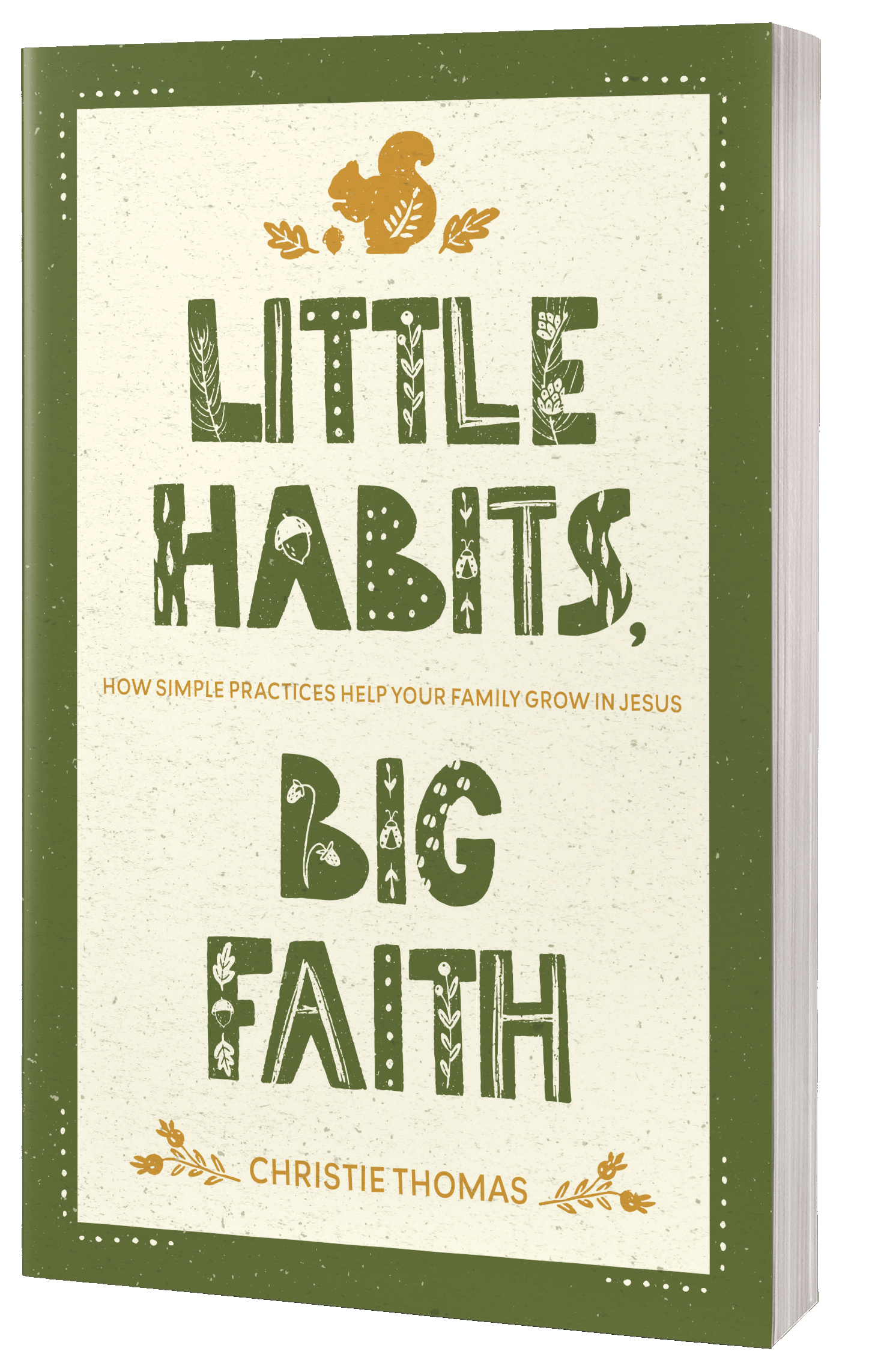
Christie,
I 10000% agree with you on the NLT being the best translation to get across what the Bible writers actually want us to know. When I was trying to teach one Bible verse per month to the kids that came to our Wednesday night Kid’s program, I would often choose several translations of each verse to present to them to help them understand that there can be many different versions of a Bible verse, but they can all mean the same thing. I didn’t want them to be afraid to choose the one that was the easiest for them to understand, or get caught off guard by someone arguing that because there are so many translations of the Bible that if can’t be trusted. I love Bible Hub because you can see so many translations at the same time and see parallel verses, so you truly get a feel for what is being said and what it means. The only hesitation I have with only using the NLT version of a verse, especially for children, is that because this version does such a great job of conveying the true meaning and thought of the writer, each verse usually has many more words in it than the NIV, ESV, or NKJV. Are the kids capable of learning the longer version? Yes, but the NLT version doesn’t always roll off the tongue like the NKJV, NIV, or ESV. Some of this is because our ears are attuned to these verses because we grew up hearing them this way or we learned them this way. I also like the CSB (formerly the HCSB) version too. This is because we use Lifeway material and the CSB is their official Bible translation and since I am the VBS director, this is the version that I am bombarded with for months on end in visual and song form! I will say I always struggled with Romans 10:17 until I heard the CSB version: “So faith comes from what is heard and what is heard comes through the message about Christ.” I had always heard this version which, to me, was completely confusing: “So then faith cometh by hearing, and hearing by the word of God.” I am sure for the average person who grew up in church, this was easy to understand, but I came to faith at 29, so I wasn’t familiar with the Bible at all. Thanks for a helpful article! I do think the most important thing in seeking out a Bible translation is to get a trustworthy one and one that makes sense to you so you will read it!
Thank you so much for sharing your experience! I’m a big fan of exposing kids to multiple translations as well, as long as it’s not confusing to them. I memorized many verses in the NIV so it sometimes feels jarring to teach my kids another translation, but what you said is true…get a trustworthy one that makes sense to you!
Hey , your blog has been helpful. one of my concerns has been whether or not to give old testament for young kids under 10, because of explicit content / words in songs of songs. I have been confused whether to give my 7yr old just the new testament or the full bible. (his reading level is of 9 year old and he is bored with story bibles) . Do you have suggestions for any NLT New testament for kids? Also, considering your experience in children’s ministry, How do you explain in an age appropriate way about some of the explicit content in bible. (Esp. in a culture like India where PDA among married couple is also rare sight for the child)
Hi Jazz! I think it’s fabulous that your child wants to read more of the Bible. The GO Bible is my favorite NLT one for kids, as it has really helpful extra content written by authors who specialize in communicating spiritual truths to kids. (https://amzn.to/4iW7Ln8) I wouldn’t worry too much about the Song of Songs, as its all very poetic language. Kids are very unlikely to understand the meaning behind it because they literally can’t think in abstract language until they’re closer to 10-12 years old. This brain development is independent of reading level. Of my kids, only my 15-year-old has read Song of Solomon and I guarantee you he didn’t even understand some of the more colorful metaphors.
The Old Testament has some incredible, faith-building stories in it and is really important for a Christian’s understanding of the New Testament. At 7 years old, your child will probably not be doing a ton of reading on his own, so if you get a full Bible, you can still steer him toward the New Testament until you think he’s more ready for the other stuff.
One way to explain to kids about some of the content in the Bible is exactly what you mentioned – it’s a cultural thing. The Bible was written a VERY long time ago in a very different culture from the ones we live in now. Just because some things were okay back then (like Jacob having multiple wives) doesn’t mean it’s ok here and now. God worked with what he had. He spoke into an ancient culture and started shaping them in ways they would understand.
I hope that’s helpful!
Question, I bought a one year NLT children’s bible for my young child. He’s an advanced reader and the storybook bible had become too easy for him and he was reader for something more challenging. I thought that since it was marketed as a children’s bible it wouldn’t have the word “sex” in it, but it did, quite frequently. He’s still very young and not ready for that conversation. Is there a translation you know of that doesn’t literally translate the word sex.
Hi! Great question. Unless you’re willing to use an old translation that contains euphemisms instead of the actual word, I would posit that’s actually better to explain (in kid-friendly terms) what the word “sex” means. If he’s old enough to read, he’s old enough to stumble on porn…the average age of first exposure is 8! As his parent, you can introduce him to the basics of reproduction in a kid-friendly, God-honoring way that (a) doesn’t make him curious enough to search it up online and (b) equips him to say no to anything he might come across. I highly recommend The Talk, which is geared at ages 6-10 and I found very appropriate to use with my boys at those ages. (https://amzn.to/4aml3pj) You could also just say “that is the word for how men and women make babies”, but I do think we need to talk more deeply about healthy sexuality WAY younger than we think we do. I know that doesn’t really answer your original question, but I do hope its helpful. 🙂